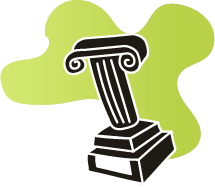Title of the resource
Title of the resource in english
Publisher
YouTube
Original language
Target and Age Group
Primary school
Link to resource
Geethanjali Kids - Rhymes and Stories, Greek Stories (accessed 1st January 2021)
Author of the Entry:
Alessia Borriello, Bologna University, alessia.borriello2@studio.unibo.it
Peer-reviewer of the Entry:
Ayelet Peer, Bar- Ilan University, ayelet.peer@biu.ac.il
Second Peer-reviewer of the Entry:
Lisa Maurice, Bar-Ilan University, lisa.maurice@biu.ac.il
Geethanjali Kids - Rhymes and Stories
Geethanjali Kids - Rhymes and Stories is a Youtube channel for children created in 2008 where bedtime stories and fairytales from various cultures are narrated in English and simultaneously depicted with animated videos.
Contents & Purpose
In the Youtube channel Geethanjali Kids - Rhymes and Stories two playlists retell stories from ancient Greek mythologies: Ancient Greek mythological stories; Greek stories.
The main Greek myths retold and animated for the children are:
Apollo and Cassandra; Athena and Poseidon; Eros and Psyche; Hercules and the twelve labours; Hermes and Apollo; Daedalus and Icarus; Odysseus and the Cyclops; Pandora’s box; Persephone; Perseus and Andromeda; Perseus and Medusa; Prometheus; King Midas; the King of Corinth and Hades; Theseus and the Minotaur.
An off-screen narrator recounts mythical stories to children, covering their main points, as the stories are enacted by stylized silent characters in cartoon animations. The language is simple and suitable for a child audience. The narrative turning points are stressed through straight-forward comments and remarks which help add a didactic element to the story (for example, the story of Apollo and Cassandra is ended with a statement of ‘counterfactual history’: «Had she lived up to her end of the bargain with Apollo, things would have been quite different, right?»).
The stories are modified for children, with sexual intercourses being presented as kisses, and characters performing evil deeds depicted not as evil, but rather, mistaken.
Further comments
The videos might be used as enjoyable educational support material, and might be recommended as a didactic adjunct for the children’s autonomous homework. A previous knowledge of characters and stories might be helpful, but is not essential.


